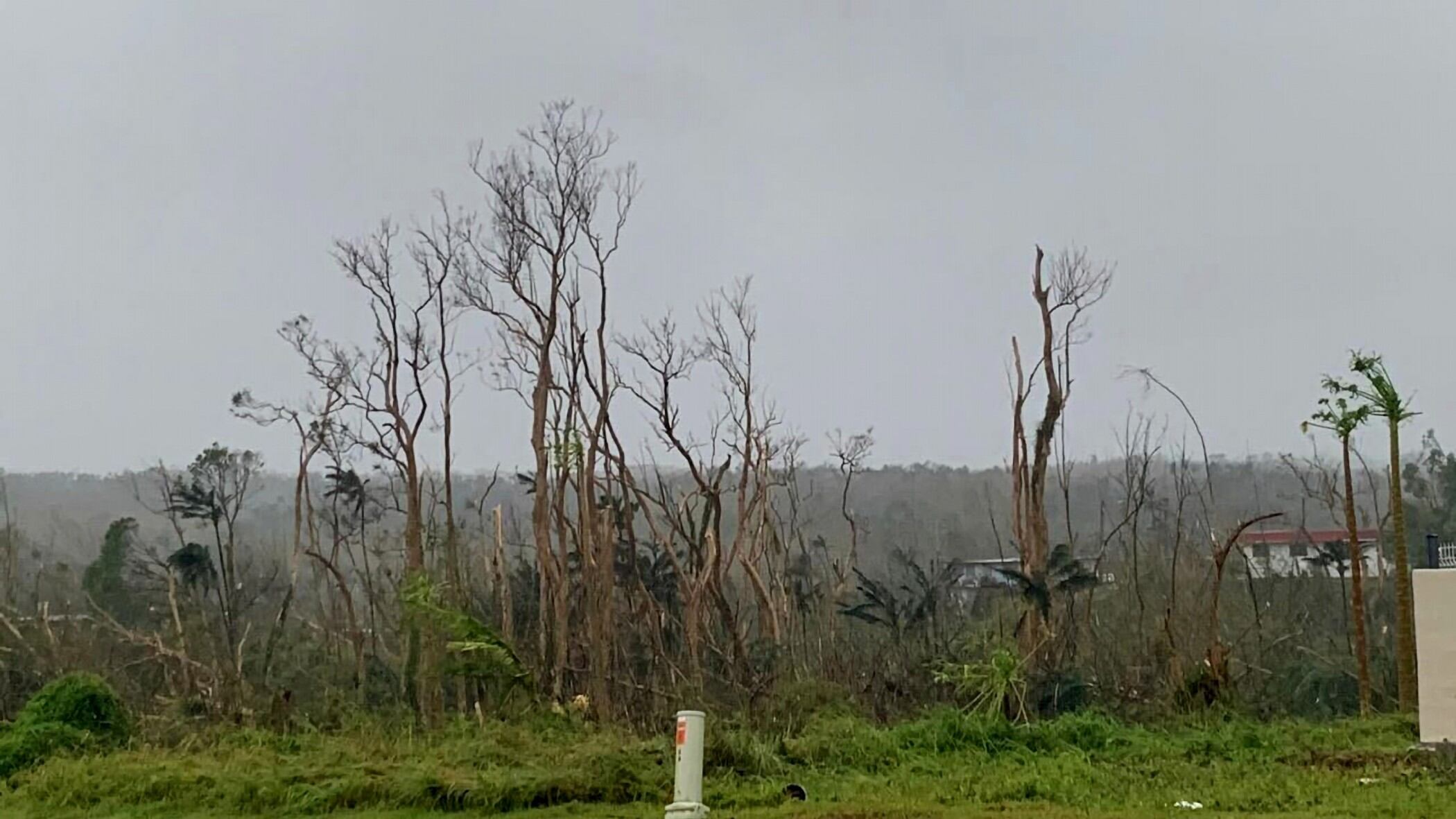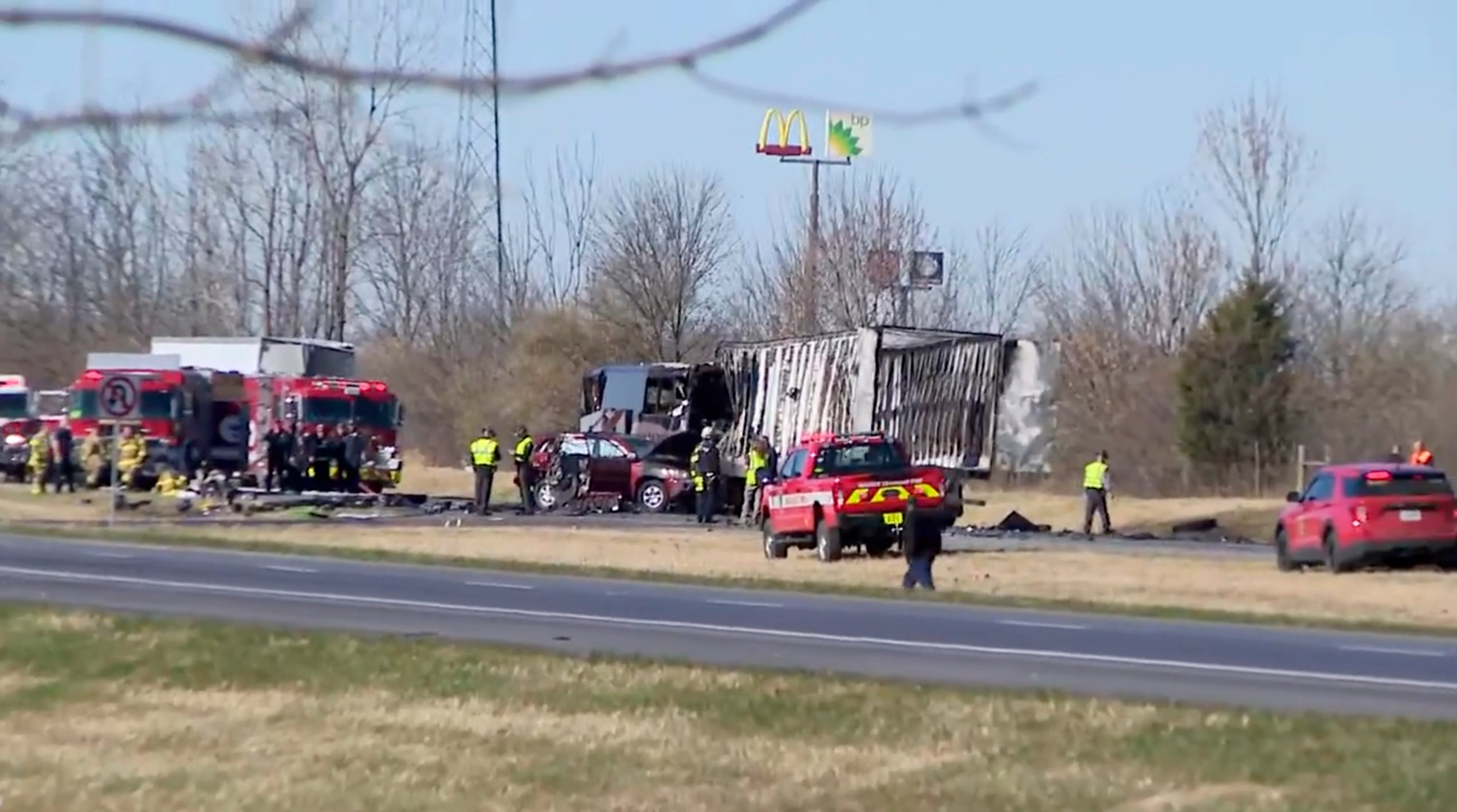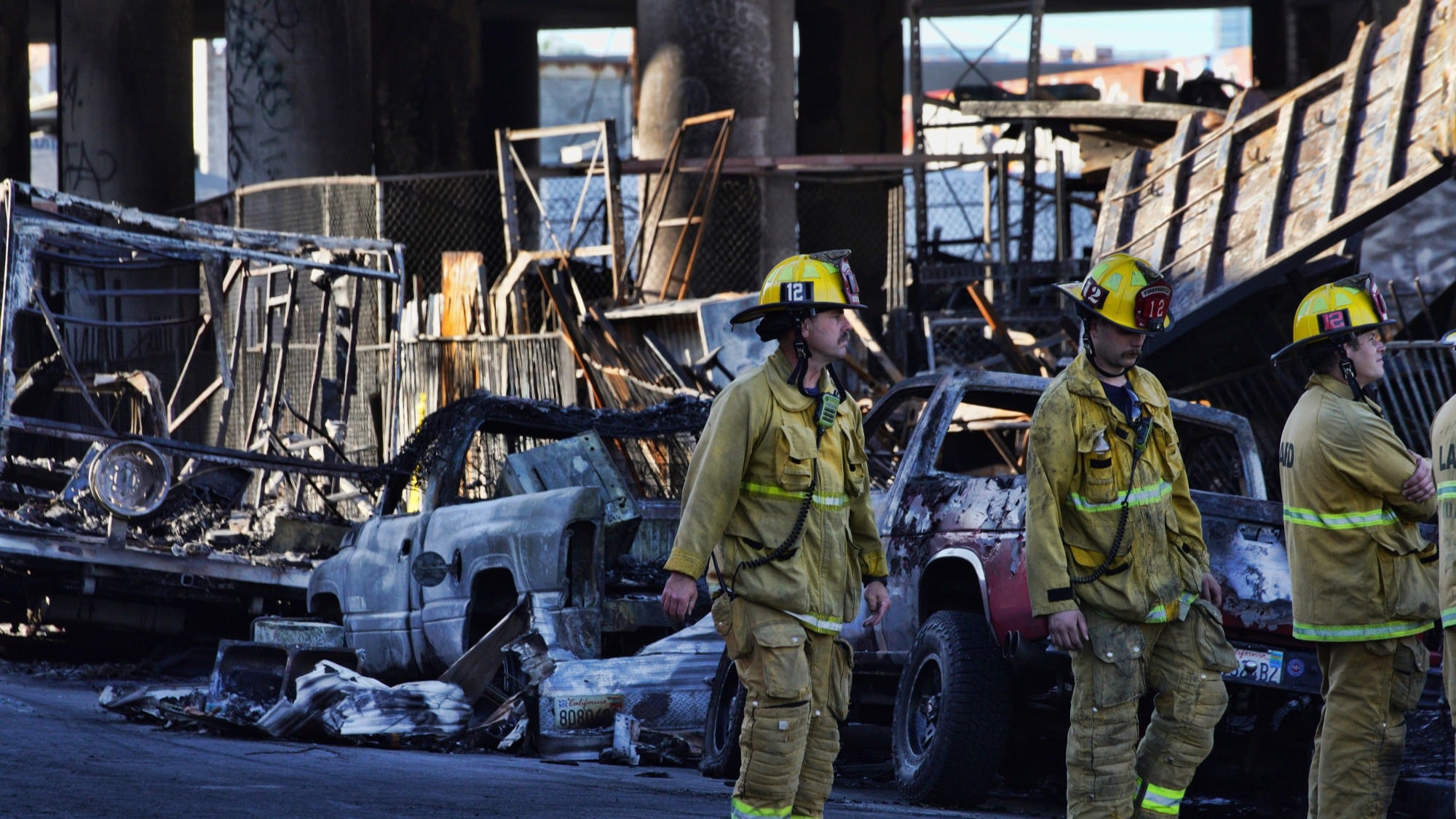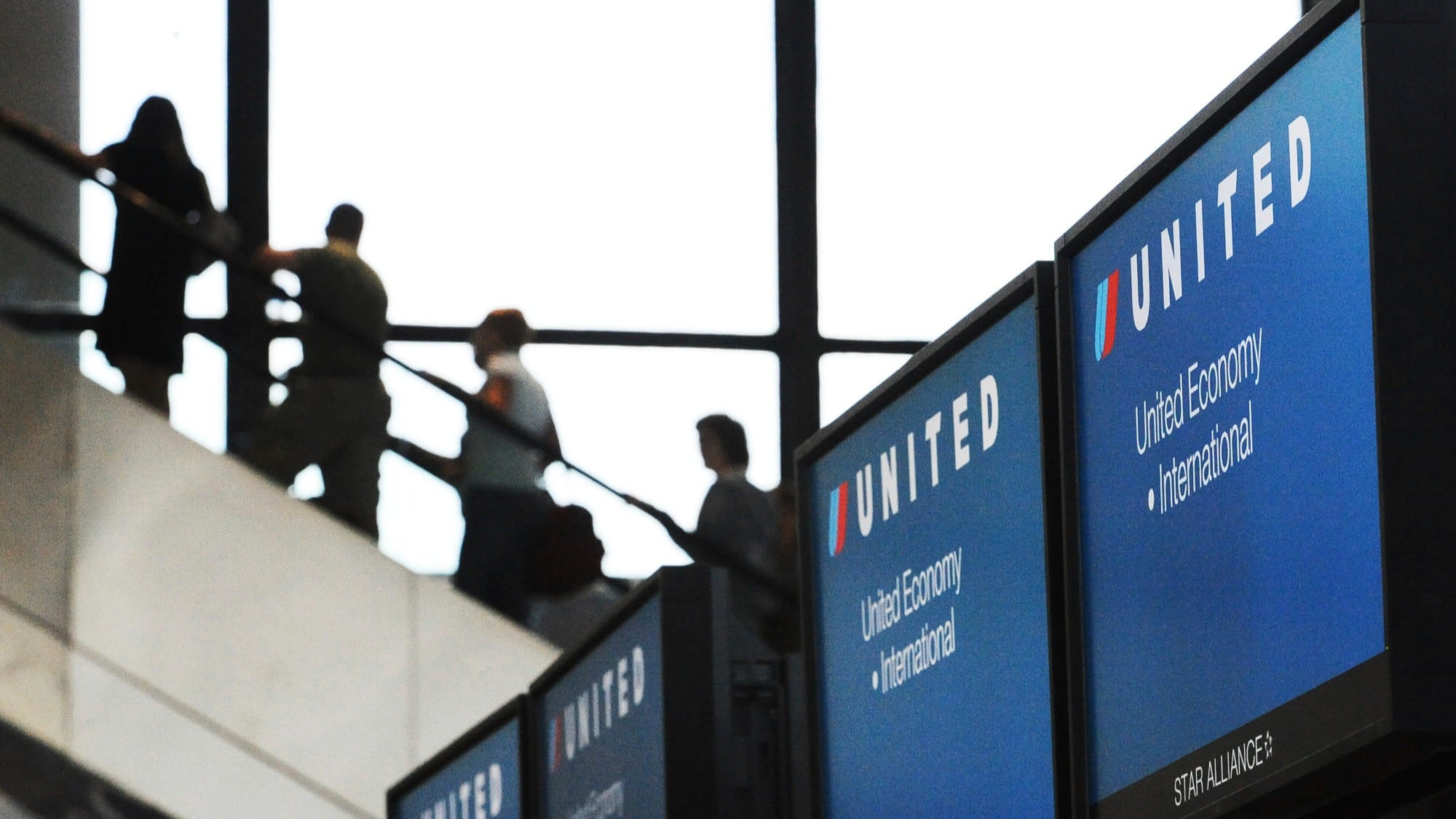By Grace Garces Bordallo and Jennifer Sinco Kelleher
Many residents of Guam remained without power and utilities Thursday after Typhoon Mawar tore through the remote U.S. Pacific territory the night before and ripped roofs off homes, flipped vehicles and shredded trees.
There were minor injuries reported but no fatalities, according to the governor's office.
The central and northern parts of the island received more than 2 feet (60 centimeters) of rain as the eyewall passed. The island's international airport flooded and the swirling typhoon churned up a storm surge and waves that crashed through coastal reefs and flooded homes.
“We are waking up to a rather disturbing scene out there across Guam. We’re looking out our door and what used to be a jungle looks like toothpicks — it looks like a scene from the movie ‘Twister,’ with trees just thrashed apart," said Landon Aydlett, a meteorologist with the National Weather Service.
“Most of Guam is dealing with a major mess that’s gonna take weeks to clean up,” he added.
The strongest typhoon to hit the territory of roughly 150,000 people since 2002, Mawar briefly made landfall around 9 p.m. Wednesday as a Category 4 storm at Andersen Air Force Base on the northern tip of the island, weather service officials said.
The scope of the damage was difficult to ascertain early on, with power and internet failures making communication on the far-flung island difficult. Guam Gov. Lou Leon Guerrero said in a video message late Thursday morning that roads were passable, but residents should avoid driving and stay home due to ongoing strong winds.
“We have weathered the storm,” Leon Guerrero said, adding that “the worst has gone by.”
As the typhoon crept slowly over the island, it sent solar panels flying and crumbled part of a hotel's exterior wall to the ground, according to videos posted on social media. At what felt like its peak intensity, the winds screeched and howled like jets, and water swamped some homes.
Leah del Mundo spent the night with her family in their concrete home in Chalan Pago, in central Guam. She told The Associated Press they tried to sleep but were awakened “by violent shaking of the typhoon shutters and the whistling strong winds.”
“It’s not our first rodeo,” she said via text message. “We’ve been through worse. But we brace ourselves for the cleanup, repairs, restoration afterwards.”
Winds peeled back the roof of Enrique Baza's mother's house in Yona, allowing water to damage everything inside.
“My mom’s house didn’t escape,” he said, adding that his mother stayed with him in his concrete home during the storm.
He drove around in a pickup truck looking for supplies to repair his mother’s roof, but most stores were without power and only accepting cash. Many wooden or tin homes he passed were badly beaten or collapsed.
“It’s kind of a shock," he said.
In Tumon, on Guam’s northeastern shore, winds tore a granite countertop from a hotel’s outdoor bar and tossed it into the air. Guests scrambled to stack chairs to brace the doors, and windows buckled and creaked.
“It was like a freight train going on outside,” said Thomas Wooley, who recounted how wind and rain pushed through the aluminum shutters of his family's concrete home overlooking Tumon Bay. When day broke, he found their outdoor china cabinet toppled and its contents shattered on the ground. A chainsaw-wielding relative helped clear downed branches.
“We’ve got tons of work to do,” Wooley said. “It’s going to take a few days to clean it up.”
Guam’s weather service office in Tiyan said it would shut down operations in the morning for workers to get home to families and assess damage at their homes. Counterparts in the Honolulu office took over their duties.
In a sign of how much help Guam might need, the Navy ordered the USS Nimitz aircraft carrier strike group to head to the island to assist in the recovery effort, according to a U.S. official. The Nimitz, along with the USS Bunker Hill, a cruiser, and the USS Wayne E. Meyer, a destroyer, were south of Japan and expected to arrive in Guam in three or four days, said the official, who spoke on condition of anonymity to discuss ship movements not yet made public.
Guam is about 3,800 miles (6,115 kilometers) west of Hawaii and 1,600 miles (1,575 kilometers) east of the Manila, the capital of the Philippines.
By Thursday afternoon, Mawar was centered 135 miles (217 kilometers) northwest of Guam and 150 miles (241 kilometers) west of Rota, Guam’s neighbor to the north, moving west-northwest at 7 mph (11 kph).
Power was also knocked out for all of Rota, the Commonwealth Utilities Corp. said late Wednesday. The island has about 2,500 residents, according to the U.S. Census Bureau.
The storm strengthened to 155 mph (249 kph) winds Thursday and regained its status as a super typhoon, according to the weather service. Mawar, a Malaysian word that means “rose,” was forecast to maintain this intensity for the next two days.
After moving away from Guam, the storm is expected to track generally northwest over a large, empty of expanse of ocean for days, and it could threaten Taiwan next week.
Guam is a crucial hub for U.S. forces in the Pacific, with about 6,800 service members assigned to the island, according to the Pentagon. Military officials evacuated personnel, dependents and employees, sent ships out to sea and moved aircraft off the island or secured them in protective hangars.
Kelleher reported from Honolulu. AP Science Writer Seth Borenstein in Kensington, Maryland, and Associated Press writers Lolita C. Baldor and Sarah Brumfield in Washington, Audrey McAvoy in Honolulu, Mark Thiessen in Anchorage, Alaska, Stefanie Dazio in Los Angeles, and Ed Komenda in Seattle contributed.
This story has been updated to report minor injuries and other details.












